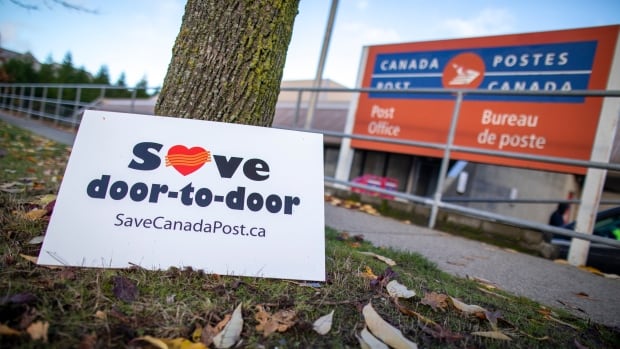Investigating The Disappearance: Clues, Evidence, And Solutions

Table of Contents
Gathering Clues: The Initial Stages of a Disappearance Investigation
The initial hours and days following a disappearance are critical. Swift action and a systematic approach to information gathering are paramount to increasing the chances of a successful resolution. This stage focuses on building a strong foundation for the investigation.
Initial Reporting and Information Gathering
Immediate reporting to law enforcement is absolutely crucial. The sooner the authorities are involved, the greater the opportunity to secure valuable evidence and begin the investigative process. Detailed information is essential. This includes:
- Detailed Description: Provide a comprehensive description of the missing person, including physical attributes (height, weight, hair color, eye color, any distinguishing marks or tattoos), clothing worn at the time of disappearance, any medical conditions or allergies, and recent photographs.
- Last Known Location: Pinpoint the precise location where the person was last seen, including any relevant details about the surrounding environment.
- Last Known Activities: Document the individual’s activities leading up to their disappearance. This includes who they were with, where they were going, and any plans they had.
- Belongings: Note any missing personal items such as wallets, phones, keys, or vehicles.
Utilizing missing person posters and launching social media campaigns can significantly broaden the reach of the investigation, leveraging the power of community involvement.
- Interviewing Family and Friends: Conduct thorough interviews with family members and close friends to gather information about the missing person's personality, habits, routines, and any potential conflicts or stressors in their life.
- Checking Social Media Accounts: Scrutinize the missing person's social media accounts for any clues, including recent posts, messages, or interactions that might shed light on their disappearance.
- Reviewing Security Camera Footage: Analyze security camera footage from nearby businesses, residences, or public spaces to identify potential sightings of the missing person.
- Analyzing Phone Records: Obtain phone records to track the missing person's last known calls, texts, and location data (with proper legal authorization).
Securing the Scene (if applicable):
If the disappearance involves a suspected crime scene, preserving the integrity of the location is of utmost importance. Contamination of evidence can severely hinder the investigation.
- First Responders' Role: First responders must secure the scene, preventing unauthorized access and documenting the initial state of the location.
- Forensic Investigators' Role: Forensic investigators meticulously examine the scene, collecting potential evidence such as fingerprints, hair, fibers, and other trace materials. They also photograph and document the scene comprehensively.
- Establishing a Perimeter: A secure perimeter is established to prevent contamination and protect the integrity of potential evidence.
Analyzing Evidence: Uncovering the Truth
The analysis of evidence plays a pivotal role in uncovering the truth behind a disappearance. Sophisticated forensic techniques coupled with careful interpretation are crucial for piecing together the events.
Forensic Techniques and Their Applications
Modern forensic science provides an array of powerful tools for investigators:
- DNA Analysis: DNA analysis can link suspects to crime scenes or establish the identity of remains.
- Fingerprint Analysis: Fingerprints found at the scene can be compared against databases or those of known suspects.
- Digital Forensics: Digital forensics examines computers, phones, and other electronic devices for clues related to the disappearance.
These techniques are instrumental in establishing timelines, identifying suspects, and reconstructing the events leading up to and following the disappearance.
- Blood Spatter Analysis: Analyzing blood spatter patterns can provide information about the sequence of events at a crime scene.
- Trace Evidence Analysis: Microscopic analysis of trace evidence like fibers, hair, or soil can link suspects or victims to locations.
- Toxicology Reports: Toxicology reports can determine if the missing person had ingested any substances that may have contributed to their disappearance.
- Digital Footprint Analysis: Analyzing online activity (social media, emails, browsing history) can reveal crucial information about the missing person's whereabouts, contacts and state of mind.
Interpreting Physical Evidence
Careful examination and interpretation of physical evidence are essential. Context is key; a single piece of evidence may seem insignificant on its own but when combined with other pieces of evidence, it can contribute significantly to the overall picture. Circumstantial evidence plays a vital role in building a strong case, but it’s important to consider all possibilities and avoid jumping to conclusions.
- Analyzing Weapons: Any weapons found at the scene undergo thorough analysis to determine their potential role in the disappearance.
- Examining Clothing: Clothing worn by the missing person is examined for fibers, trace evidence, or other clues that might indicate where they were or who they were with.
- Crime Scene Reconstruction: Forensic specialists often reconstruct the crime scene to understand the sequence of events.
Developing Solutions and Strategies for Successful Resolution
Effective investigation involves a multi-pronged approach, utilizing various strategies tailored to the specific circumstances of the disappearance.
Investigative Strategies and Techniques
The investigative approach varies depending on the suspected circumstances:
- Runaway: Investigations into runaways often involve tracing the missing person’s social networks and checking locations they are known to frequent.
- Abduction: Abduction cases typically require extensive investigative work, including surveillance, undercover operations, and witness interviews.
- Accidental Disappearance: Accidental disappearances might involve searching extensive areas, utilizing specialized search and rescue teams.
Several investigative techniques are employed:
- Geographic Profiling: Geographic profiling uses statistical analysis of crime scene locations to predict the likely residence of the offender.
- Behavioral Analysis: Behavioral analysis helps to understand the likely actions and motives of both the missing person and potential suspects.
- Interviewing Techniques: Trained investigators use a range of interviewing techniques to elicit information from witnesses, suspects, and family members.
- Cross-referencing Databases: Investigators cross-reference databases such as missing person registries, criminal databases, and vehicle registration records.
Collaboration and Resources
Successful resolution often hinges on effective collaboration:
- Law Enforcement Agencies: Various law enforcement agencies work together, sharing information and resources to broaden the scope of the investigation.
- Forensic Experts: Forensic experts provide crucial scientific analysis of evidence.
- Community Members: Community involvement, including the dissemination of information and the provision of leads, can significantly aid the investigation.
- Organizations Dedicated to Finding Missing Persons: Organizations such as the National Center for Missing and Exploited Children (NCMEC) provide invaluable support and resources.
Utilizing National Missing Person Databases: National and international databases are crucial resources for sharing information and connecting related cases.
- Working with NGOs: Non-governmental organizations (NGOs) often play a vital role in supporting families and assisting with searches.
- Utilizing Reward Programs: Reward programs can incentivize the public to provide crucial information.
Conclusion
Investigating disappearances requires a systematic approach involving prompt reporting, thorough information gathering, detailed evidence analysis utilizing forensic techniques, and strategic investigative techniques. Collaboration between law enforcement, forensic experts, and community members is vital. The use of national databases and other resources is also key. Timely reporting and information gathering are crucial for maximizing the chances of a successful outcome. Remember, every clue, however small, may be the key to finding a missing person.
If you or someone you know is facing a disappearance, act immediately. Report it to the authorities and seek help from relevant organizations. Understanding the complexities of a disappearance investigation and how to actively contribute is vital in bringing closure to families and communities affected by these tragic events. Effective investigation of disappearances saves lives.

Featured Posts
-
 Fujifilm X H2 A Hands On Look At Its Whimsical Design And Fun Features
May 25, 2025
Fujifilm X H2 A Hands On Look At Its Whimsical Design And Fun Features
May 25, 2025 -
 Dr Terrors House Of Horrors Location Tickets And More
May 25, 2025
Dr Terrors House Of Horrors Location Tickets And More
May 25, 2025 -
 Understanding Russell And The Typhoons Influences Style And Impact
May 25, 2025
Understanding Russell And The Typhoons Influences Style And Impact
May 25, 2025 -
 Canada Post Strike Fears Losing Customers Trust
May 25, 2025
Canada Post Strike Fears Losing Customers Trust
May 25, 2025 -
 Facing Retribution The Perils Of Advocating For Change
May 25, 2025
Facing Retribution The Perils Of Advocating For Change
May 25, 2025
Latest Posts
-
 Tour Of Flanders 2024 Pogacar And Van Der Poels Epic Battle
May 26, 2025
Tour Of Flanders 2024 Pogacar And Van Der Poels Epic Battle
May 26, 2025 -
 Unprecedented Mathieu Van Der Poels Triple Paris Roubaix Triumph
May 26, 2025
Unprecedented Mathieu Van Der Poels Triple Paris Roubaix Triumph
May 26, 2025 -
 Pogacar Vs Van Der Poel A Tour Of Flanders Showdown
May 26, 2025
Pogacar Vs Van Der Poel A Tour Of Flanders Showdown
May 26, 2025 -
 Paris Roubaix 2024 Van Der Poel Completes The Hat Trick
May 26, 2025
Paris Roubaix 2024 Van Der Poel Completes The Hat Trick
May 26, 2025 -
 Van Der Poels Third Consecutive Paris Roubaix Victory
May 26, 2025
Van Der Poels Third Consecutive Paris Roubaix Victory
May 26, 2025
